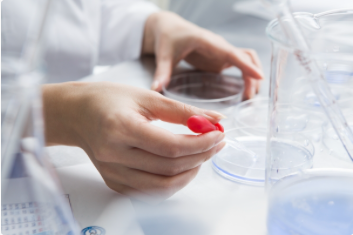Testing the most important questions about water
Water is more than H20. Essential minerals are in our drinking water solved and make it our most important food. The concentration of substances such as calcium, magnesium, sodium or potassium is constantly monitored and says a lot about the quality of the water. The respective water suppliers are responsible for controls. But no matter how conscientiously they go about their work and only circulate perfect water, they cannot guarantee that the water will flow out of the tap in the best quality.
Why should I test my water?
Ultimately, the consumers themselves are responsible for the water quality at home. Substances such as lead, iron, copper, nickel or zinc can get into the water through house pipes and fittings. If water stands for a long time, the risk of germs increases. That sounds worrying, and rightly so. This can quickly lead to problems, especially in babies, children, pregnant women or people with a weakened immune system.
Impurities do not necessarily have to be noticed. Drinking water can look, smell and taste normal and still be heavily contaminated. If the water changes color, smells bad or no longer tastes good, there is of course an urgent need for action. In both cases, however, the problem must first be identified. A water test shows whether water is as safe as it looks or where the cause of contamination is.
What options are there to test drinking water?
If you want to test your water, you have various options. You can carry out a rough assessment yourself, and send your water to the laboratory for a comprehensive scientific analysis.
Test it yourself
The name says it all: you can carry out self-tests yourself at home. In pharmacies and drugstores, for example, there are test strips for measuring the total hardness or the pH value. Test sets for substances such as lead, nitrate, nitrite or pesticides are available online. However, the accuracy of these tests is debatable. Bacteria in the water can also be determined with the help of self-tests, but the result only shows whether bacteria are present and not in what number.
Experts see this only as a quick estimate. A laboratory analysis cannot replace self-tests.
Have it tested
Laboratory tests deliver the highest possible accuracy. As a rule, this is done by pouring water into a sample bottle and sending it to the laboratory. Both chemical guide values and physical parameters are tested, and precise statements can be made about the presence of bacteria and the number of germs. The evaluation comes after a few days by post or email. In addition to the exact values, many institutes also provide a consumer-friendly interpretation of the results.
Special case water hardness test
You have probably struggled with limescale deposits in the household. The decisive factor here is the hardness of the water. To be able to take targeted action against limescale, you should know the hardness of your water.
How do I find the right water test?
Not all water tests are the same. Different tests cover different parameters. First, get an overview of the most important key figures. Laboratory tests are usually already put together in such a way that they are suitable for a specific problem situation. If you have any suspicions about what might be wrong with your water, this is probably the best way to get out.
Well-known test institutes usually offer a basic test in the first place. This includes the most important test categories and is suitable for most situations. If babies or small children live in the household, a baby water test makes sense. This takes into account the needs of your children. You can also determine the occurrence of bacteria with your own test. Own well tests are usually offered for home well owners. In this way, the quality of the well water is examined in detail.
What measures do I take to react to my result?
Correct interpretation is at least as important as careful analysis. Water hardness is a major problem in many Austrian households. With a water softener, you save yourself the hassle of descaling and cleaning. Lime in the water is responsible for good taste – that’s why there are already processes that do not change the taste.
Heavy metals are often due to the materials used in the home. Old leads made of lead or copper should be replaced urgently. If the unwanted substances do not come from the pipes, filter systems help. There are different procedures depending on your needs. Other unwanted substances such as salts are also removed from the water, but healthy minerals are often lost at the same time. In the event of a bacterial infestation, the water must be sterilized; in such cases, it is often advisable to boil the water. Of course, this only helps in the short term. If it is not a one-off infestation, you should thoroughly flush and disinfect the entire system.



